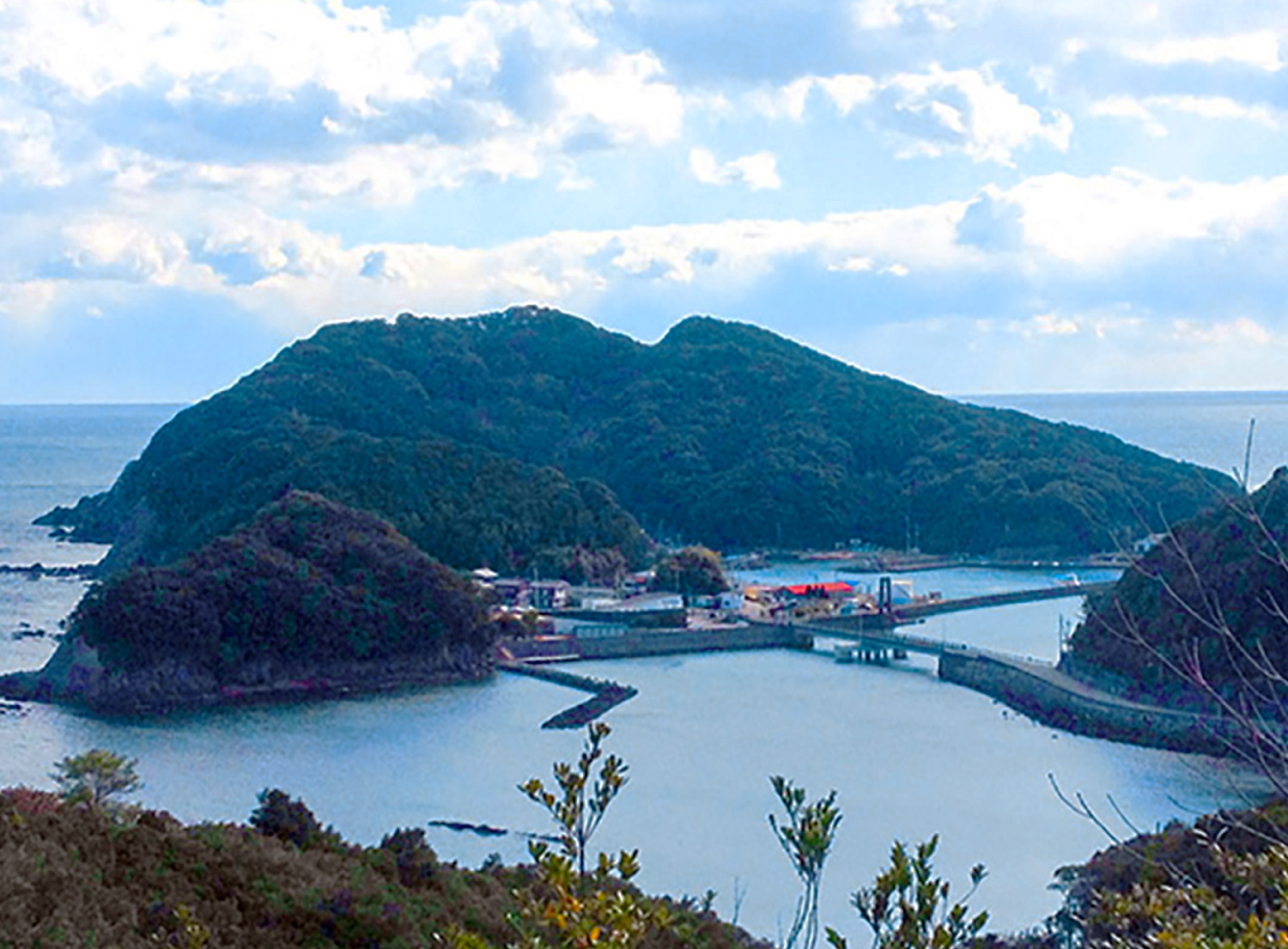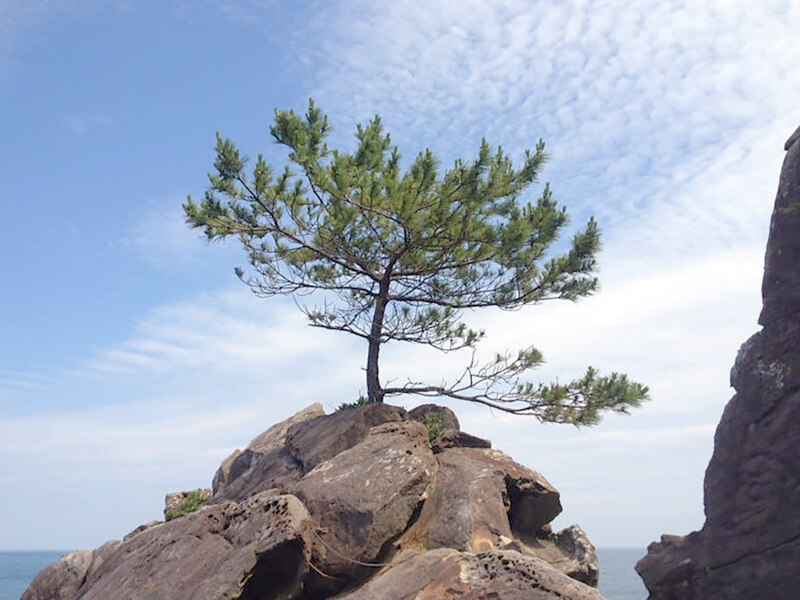History of Takegashima

Development of settlements centered on the seaside
As the opportunities to sail by boat from Cape Muroto to the suburbs of Awaji Island increased, settlements gradually flourished along the Pacific coast of Kochi and Tokushima, and people began to pioneer new lands. In ancient Japan societies, it was confirmed that high-altitude settlements were scattered around the Seto Inland Sea, and Shikoku was no exception. Therefore, villages flourished at the mouth of the Kaifu River, and with the development of villages centered on Kaifu, high-altitude settlements began to be built in the upper reaches of the river that flows there, from Katsuura County in the north and east of Naka District, to the west, through Mt. Kumohaya and Mt. Takagi, to the foot of Mt. Kenzan. When they called at Kaifu, dignitaries were able to continue their journey along the Kaifu River, along today's Tosanaka Kaido to the foot of the mountains of Shikoku. According to one theory, these high-altitude settlements in the eastern part of Shikoku may be the roots of the Evil Horse Province, and although the actual situation is uncertain, the position along the east coast of Shikoku in ancient society remains extremely important.
Why Takegashima became a place for rituals
Just before you reach the port of the sea, which occupies an important position as a halfway point connecting Cape Muroto with Ishima and Awaji Island, you will see Takegashima with your own eyes. It is a rocky island close to the sea and overlooks the Pacific Ocean, so its history must go back to ancient times. That is probably why festivals like the underwater mikoshi have continued. And since Iwa-no-shima was once considered a sacred place in ancient times, it cannot be ruled out that Takegashima has been used as a ritual place since ancient times, and that it was also used by dignitaries to store and treasure important things. The history of Takegashima cannot be identified because there is no mention of it in ancient documents. However, even with its unique position, its importance as a key point for seafarers must have been recognized for a long time.
Establishment of the Distant Watchhouse and the Wolf Smoke Tower.
 After that, the times passed, and at the top of Takegashima Mountain, a distant viewing banjo was officially established in the 4th year of culture (1807), and it was officially recognized as the Wolf Smoke Tower. For sailors sailing northward over the coast of Muroto from the south, the presence of Takegashima Island at the halfway point to the Kii Channel was important. From the summit, I could not only see the Pacific Ocean, but also Cape Muroto to the south, the Kii Channel to the northeast, and the Kumano Mountains to the east. Therefore, Takegashima must have played a role as a viewing platform since ancient times. And in later generations, wolf smoke will be used as a means of communication. Based on its history, Takegashima was officially named as a distant observation station and became known as the base point of the Wolf Smoke Tower.
After that, the times passed, and at the top of Takegashima Mountain, a distant viewing banjo was officially established in the 4th year of culture (1807), and it was officially recognized as the Wolf Smoke Tower. For sailors sailing northward over the coast of Muroto from the south, the presence of Takegashima Island at the halfway point to the Kii Channel was important. From the summit, I could not only see the Pacific Ocean, but also Cape Muroto to the south, the Kii Channel to the northeast, and the Kumano Mountains to the east. Therefore, Takegashima must have played a role as a viewing platform since ancient times. And in later generations, wolf smoke will be used as a means of communication. Based on its history, Takegashima was officially named as a distant observation station and became known as the base point of the Wolf Smoke Tower.
Smoke field on Takegashima Island
The purpose of the smoke field on Takegashima Island was to raise smoke and report to the surrounding people in the event of a shipwreck, invasion or attack by a foreign ship. Stations of communication using wolf smoke called Far View Bansho stretched from the Pacific coast of Shikoku to the Kii Suido, and Takegashima was the first of the dozens of distant observation stations to make a name for itself. Therefore, it seems that the flatlands in the northern part of the island have been inhabited since ancient times. In the early modern period, 16 people moved to the island in 1847, and it is recorded that there were 50 houses on the island in 1854.
The famous "Shikoku Road"as a promenad
Recently, promenades called "Shikoku Roads" have been built throughout Shikoku, and Takegashima Island is included in the route. The promenade starts from Takegashima Shrine near the fishing port of Takegashima, passes through the top of the mountain, goes around the island, passes through the inner shrine of Takegashima Shrine, and returns to the fishing port again. The area facing the fishing port and inland on the west side of the promenade is about 30% of the entire island and is owned by Kaiyo Town today. The area outside the promenade facing the Pacific Ocean has been owned by the Takezaki family, who are thought to be descendants of the family who were sent to take charge of the Wolf Smoke Tower, until recent years.